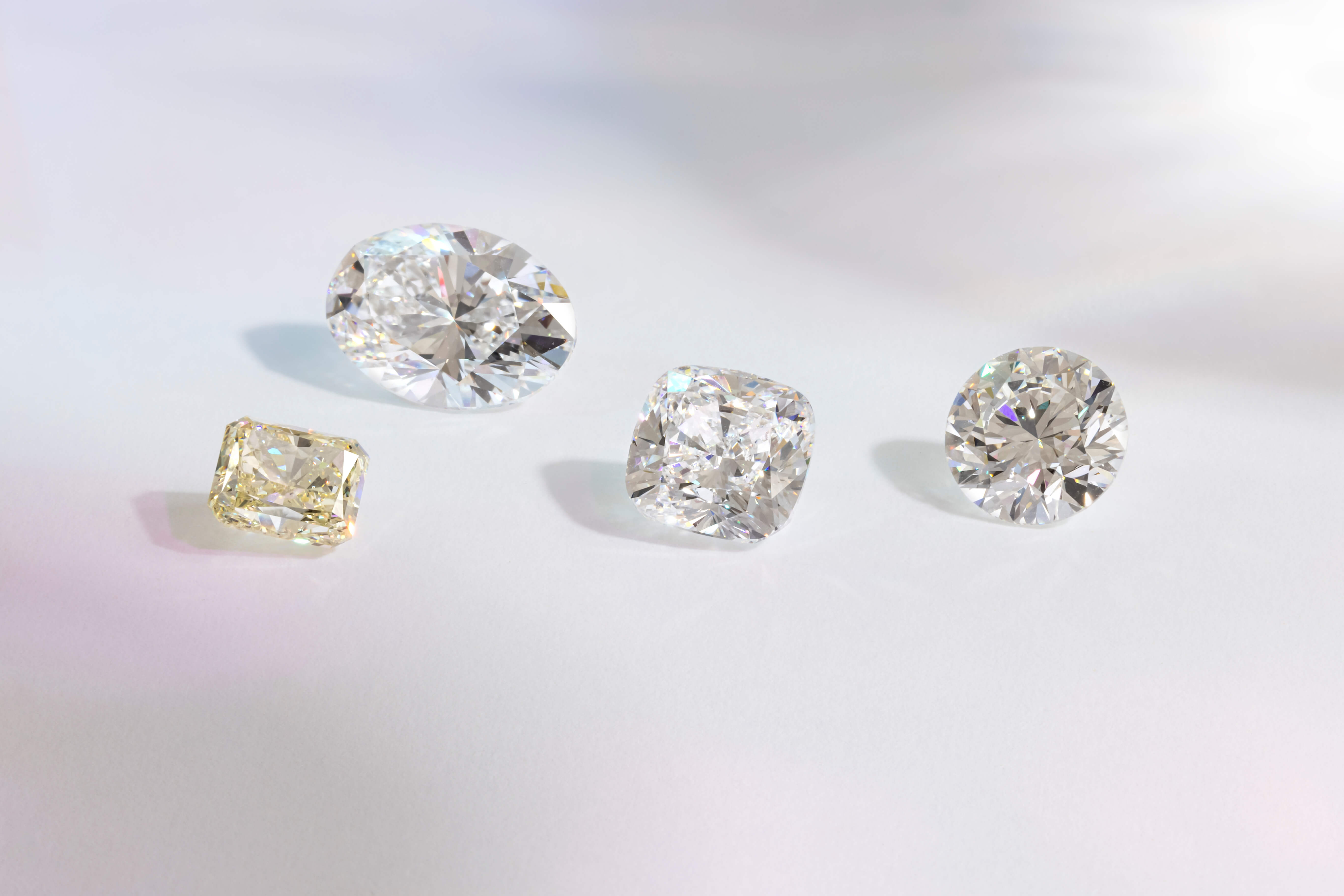Diamond colour, one of the 4C’s of diamonds, is frequently discussed when speaking about diamonds and jewelry, but what does it actually mean? And how important is it to consider when buying a diamond engagement ring? Read on to find out more.
What does diamond colour mean?
Diamond colour refers to the colour within a white diamond, which ranges from colourless to very light yellow or brown. The higher the colour grade, the closer it is to colourless on the diamond colour scale. Diamond colour is important as it is one of the factors that dictates the value of a diamond: the closer to colourless a diamond is, the higher in value it becomes.
Diamond Colour Chart

What are diamond colour grades?
Diamond colour is based on the colour grading system developed by the Gemological Institute of America (GIA). The grading system has an alphabetical designation, wherein D is the highest colour grade and Z is the lowest. The reason that colour grades start at D is because, prior to this system being established, there were several different types of grading systems used throughout the world, ranging from alphabetical to numerical. With all of the different grading systems existing at once, the definition and comparison of grades became near impossible, therefore GIA created their own grading system, which has since become the industry standard, starting at D so as to not create any more confusion in comparison with the previous grading systems. It’s important to note that the diamond colour scale only measures the colour of white diamonds, and should not be confused with fancy coloured diamonds like red, pink, blue, yellow, or black.
Does lower diamond colour grade mean lower quality?
Lower colour grade does not mean lower quality, it simply means that it has a more yellow hue or undertone compared to its colourless counterpart. A higher grade means that the diamond has greater value as it is closer to colourless, the most sought-after diamond colour. Keep in mind that the diamond’s colour does not affect its structural quality. Consequently, a diamond with a higher colour grade will be more expensive than a diamond with a lower colour grade seeing as a colourless diamond has more market value than ones with a yellow or brown tint. That being said, when considering budget, all 4C’s need to be considered as cut, colour, clarity, and carat combine to create the quality and value of a diamond.

Although diamond colour can affect the visual appearance of a diamond, the final decision comes down to budget and personal preference. The difference between a D and an H is difficult to see for the untrained eye, but the difference in price could be substantial depending on the other 4C's. If you prefer a larger diamond at a lower budget, you may choose a lower diamond colour without compromising the visual clarity of the stone. Conversely, if your ring is yellow gold, a diamond on the lower end of the colour scale would pair perfectly, as the light yellowish tint of your diamond would go unnoticeable against the yellow backdrop of your ring’s setting. The majority of diamonds used at Ecksand are of the higher colour grades, ranging predominantly from D to H. With all of the significant variables at play, the final decision comes down to your personal preferences. And with our diamond ring builder you're given a variety of diamond colour choices to make sure you find your perfect ring, unique to you.





























